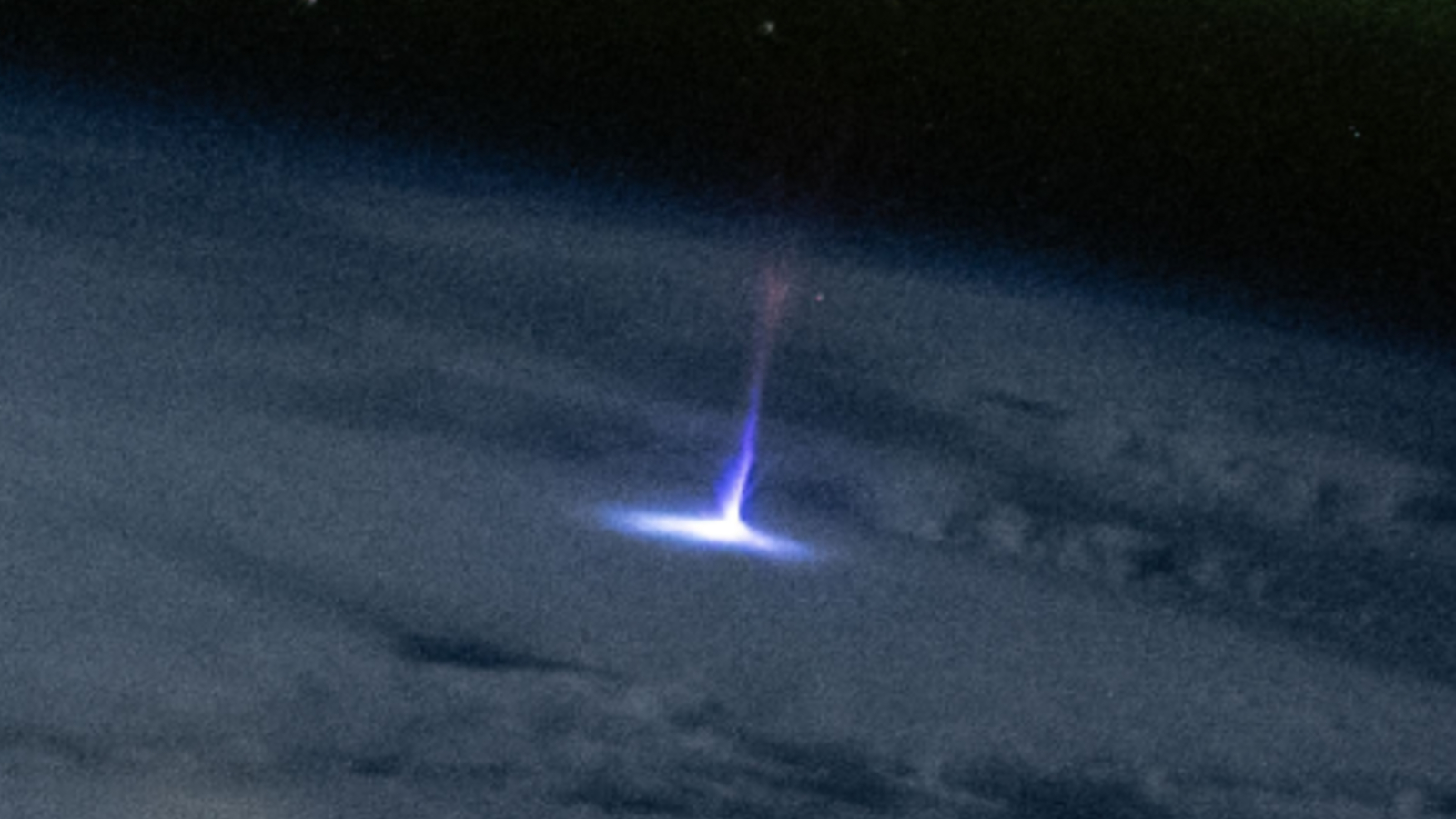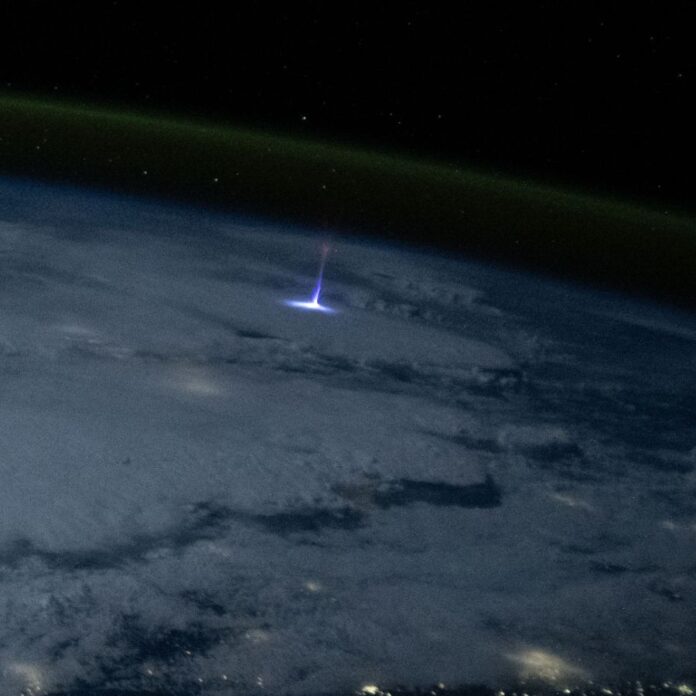NASA Astronaut Records Rare Lightning Event from Space
On July 3, 2025, NASA astronaut Nichole Ayers captured a rare atmospheric event while aboard the International Space Station (ISS). At first, she thought she had photographed a sprite, a type of lightning that appears high above storms. But after review, scientists confirmed it was something far more unusual — a gigantic jet.
Dr. Burcu Kosar, who leads NASA’s Spritacular project, confirmed the find and called it one of the most detailed space-based images of the phenomenon ever recorded. The Spritacular project collects reports and images of rare upper-atmosphere lightning to help researchers study them.
How the Photograph Was Taken

Ayers took the image as the ISS passed over Mexico and the southwestern United States. She used a Nikon Z9 camera with a 50mm lens, set up in the Cupola observatory for time-lapse photography.
The photograph shows the gigantic jet rising from a thunderstorm near the Texas-Mexico border. The bright lights of cities such as Dallas, Austin, San Antonio, Houston, and Torreón can be seen in the distance. The shot is sharp enough to show the shape of the jet and its connection between the thundercloud and the upper atmosphere.
Hungarian scientist Jószef Bór, who works on alerting ISS crew members about potential lightning events, praised the photograph, saying it sets a new standard for capturing gigantic jets from space.
What Makes Gigantic Jets Special

Gigantic jets are one of the rarest forms of high-altitude lightning, part of a group known as Transient Luminous Events (TLEs). They create a bridge of electricity between the top of thunderclouds and the edge of space, about 100 kilometers above Earth. Unlike sprites, which happen after lightning strikes, gigantic jets burst straight upward from the storm, carrying a strong electrical charge toward space.
These events are so rare that most sightings happen by accident, often from airplanes or through lucky ground-based photographs. They usually form when the upper part of a storm allows electricity to escape upward rather than toward the ground.
Why This Capture Matters for Science
The ISS is a perfect location to study such events because it orbits about 250 miles above Earth, offering a clear view of storms from above. NASA’s Spritacular project, started in 2022, aims to gather these rare images into a single database for researchers to study.
Ayers took the photo during her time as pilot of NASA’s SpaceX Crew-10 mission, which launched in March 2025 and ended in August 2025. Alongside daily mission tasks, she and other crew members spent hundreds of hours collecting scientific data.
This new photograph will help researchers better understand how gigantic jets form and how they might affect Earth’s electrical balance. Scientists also note that events like this could have effects on satellites and communication systems, making them important to monitor.
Personal Analysis
The capture of this gigantic jet highlights how much of Earth’s weather activity remains unseen from the ground. While lightning is common, its rarer forms — like gigantic jets — can pass unnoticed without the right vantage point. The fact that the ISS can record these moments shows the value of having humans in space, not just machines. Ayers’ quick work with the camera turned what could have been an unnoticed flash into a major contribution to science. It also raises an important point: the more eyes we have watching from space, the more we can learn about our own planet.
Sources: nasa.gov

